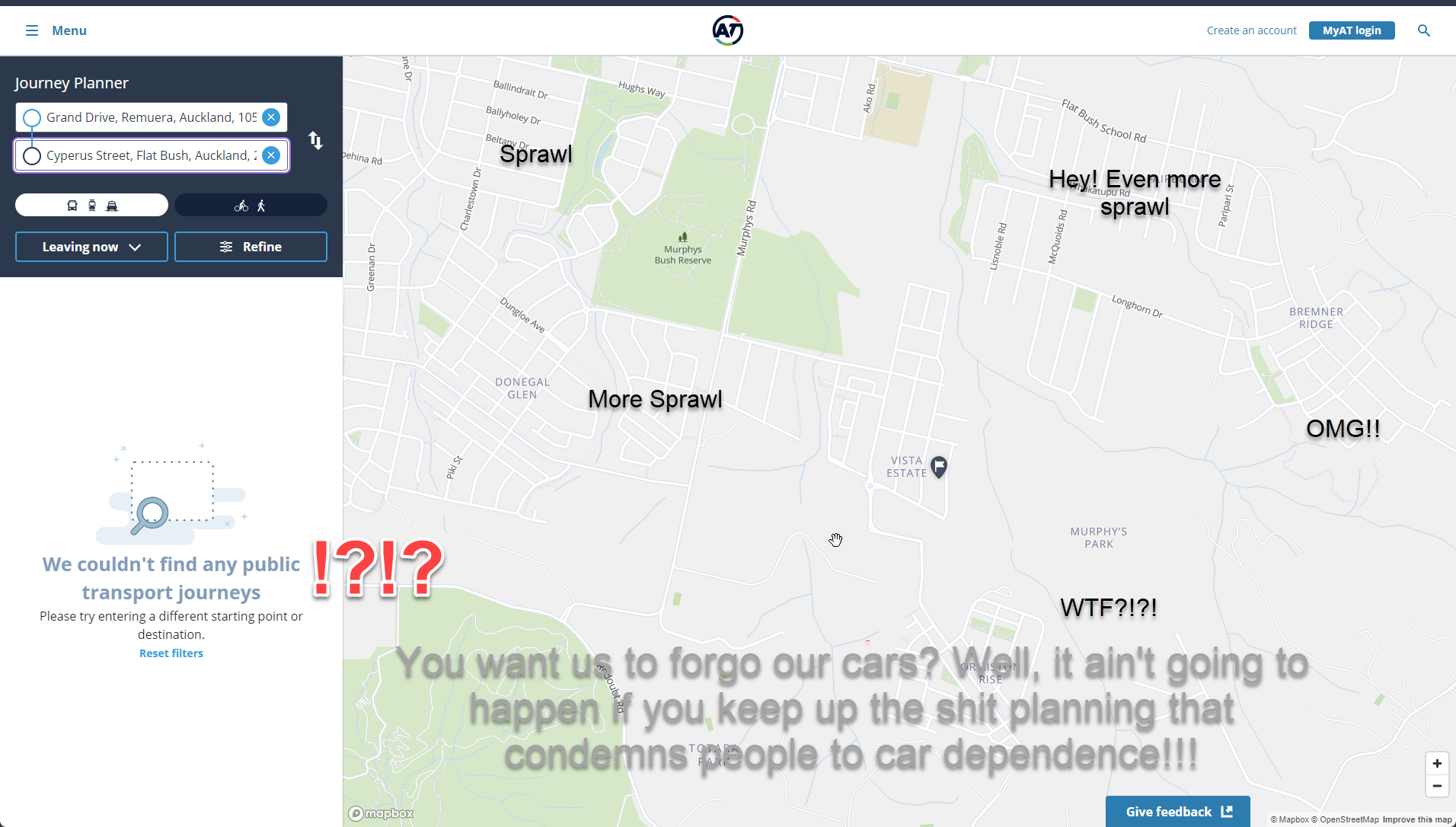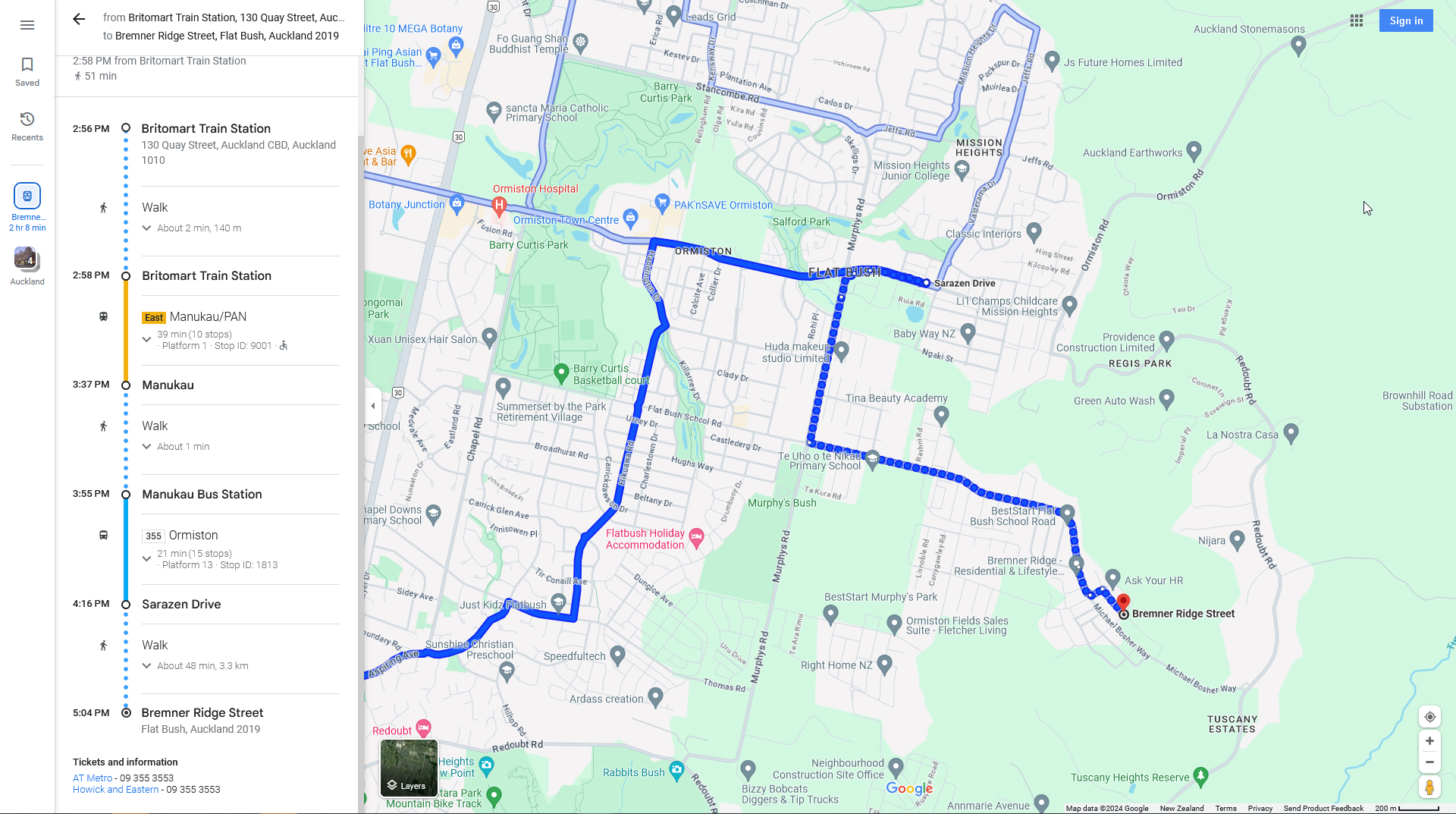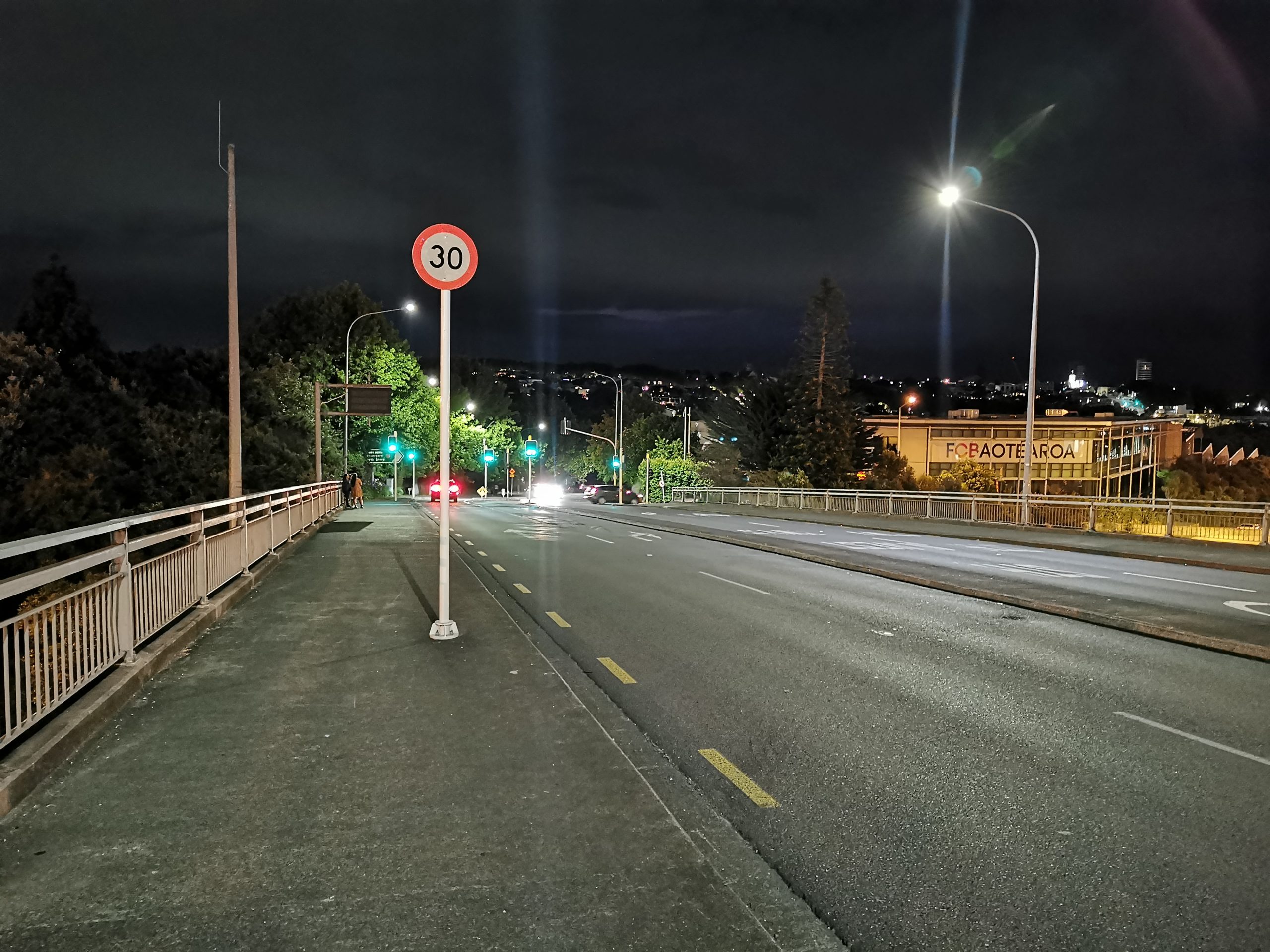Email I sent to Auckland Council back in March regarding my concerns over urban planning that continue to entrench a culture of car dependence, but never got a response.
Good Evening,
I apologies if this is not the right channel to provide this type of feedback on. (If this is not the right channel, please kindly direct me to the correct channel. Thanks)
I’m writing to relay a generalized concern I have as a ratepayer regarding urban planning in terms of intensification and the access to adequate transport links.
Have noticed several town house developments popping up in places such as Takanini, Papakura, Redhill, Flat bush, Ormiston (South) and Glen Eden, Kumeu (West) that is being established so far away from frequent Public Transport routes (2 km or more walking distance or only served by an infrequent bus route).
The issue this presents is that without easy access to well served public transport routes many residents will simply buy a car and then park it on often very narrow streets. Other than the issue of entrenching car dependency adding ever more private vehicles into an already (ridiculously) overloaded roading network, it also means emergency services are blocked or impeded and presents a safety issue for road users (of any transport mode) with so many cars parked on narrow streets and berms.
I ask, are the teams responsible for urban development and approving townhouse developments within Auckland Council actually liaising with the Likes of Auckland Transport to ensure these new Higher density neighbourhoods and developments are well served with easy access (less than 1 km walk) to frequent and reliable Passenger transport routes?Thanks and regards,
Here is a screenshot of Auckland Transport’s Journey planning being unable to suggest services to get you to Flat Bush…

Clicked the Give Feedback (in vain) and dashed this off in exasperation…
This won’t be solely AT’s fault obviously, but by golly, if the Council wants to encourage a transport modal change away from car dependency, their Urban planning department certainly isn’t helping matters. Swaves of Flat Bush. Large houses squashed on to small sections. Cars parked everywhere and about 30-40 minutes to the nearest bus stop! Is there a proper channel / department / person that I as an ordinary member of the public could raise my concerns to?
Why oh why are we approving new “Green fields” development so far away from Public Transport? 48 Minutes walk to Bremner Ridge St from the nearest bus stop???

It’s not just Flat bush either, but a lot of places across Auckland. Parts of Takanini, Red Hill, Kumeu are similarly affected. Very little in the way of established Public Transport, yet people are moving there, and when they move there, what are those residents going to do? You guessed it, they’ll likely buy a car, or two, or three and park any that won’t fit on the front lawn on the streets instead.
As an aside, seriously contemplating a possible move out of Auckland. Living here with it’s inadequate infrastructure (particularly surrounding transport) isn’t doing my mental health any favours. (Will keep the house and rent it out, in case at some point I want to come back)


